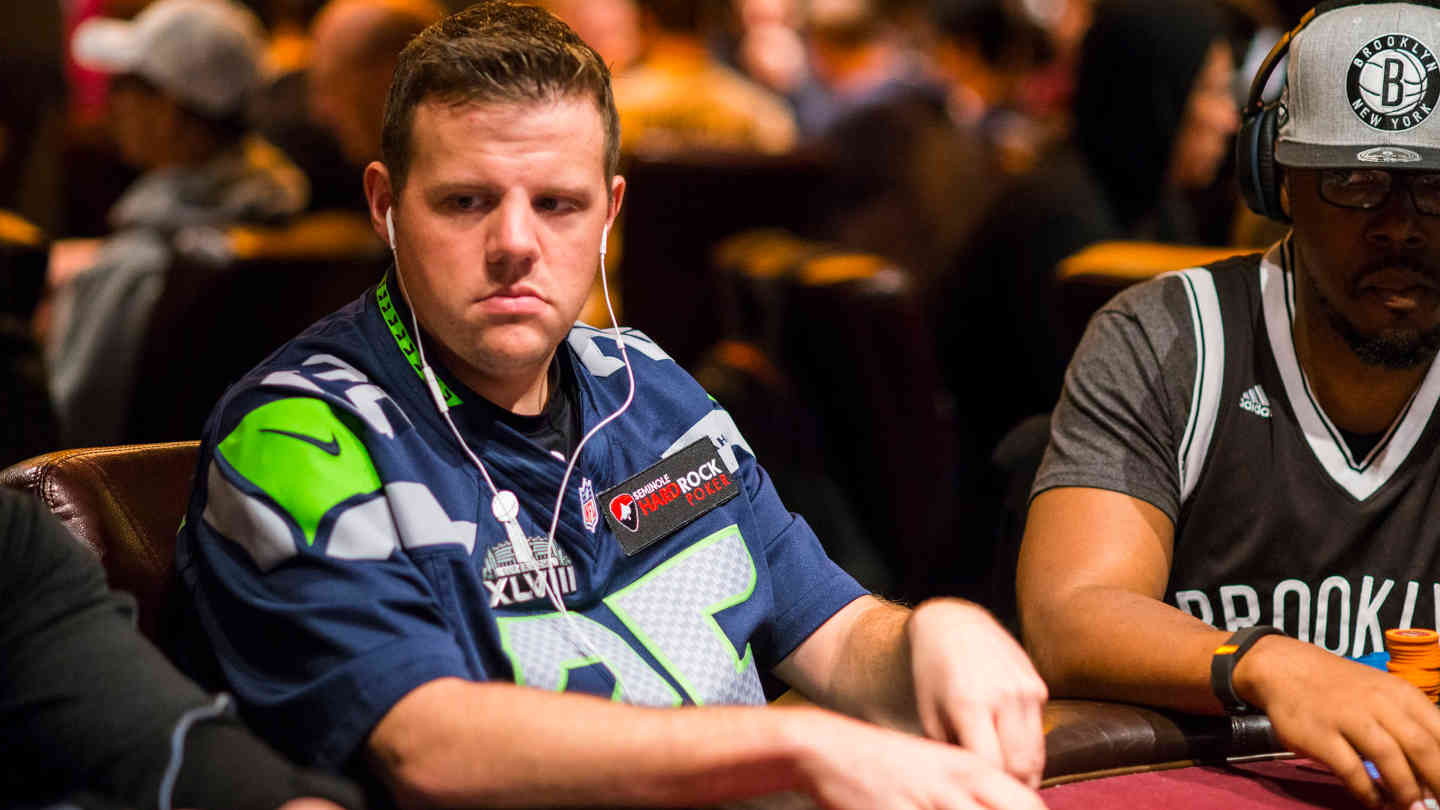Pot Odds Explained – How to Calculate Pot Odds in Poker

11 minutes
Last Updated: November 13, 2023
Poker is a card game ruled by math, and understanding the important mathematical concepts behind it is what separates good poker players from the fish.
If you want to play the game right and have a chance at being a long-term winner, learning about pot odds is one of the first steps you need to take.
In this article, I am going to explain what poker pot odds are, how to calculate pot odds, and why they matter in the first place.
If you are already familiar with the concept, I still recommend you keep reading and get a quick refresher that could come in handy the next time you play poker live or on one of the top poker sites online.
What Are Pot Odds?
The first question I need to answer is, what are pot odds in poker? Fortunately, the answer to this question is quite simple.
Pot odds represent the relation between the pot size and the bet you are facing on any particular betting street in a poker hand.
Pot odds are expressed in the form of fractions such as 2/1 (two to one), 5/2 (five to two), etc. You can also convert this number into a percentage if you want to.
In either case, pot odds tell you what kind of price you are being offered by the opponent to make a call and continue playing the hand.
If you don’t like the price, you can simply fold your cards and move on to the next hand. If you do, you can make the call or even go for a raise in some situations.
To a complete novice, it may seem like pot odds don’t matter too much. However, the truth is that they are one of the most important concepts in the game of poker altogether.
How to Calculate Pot Odds in Poker

Calculating pot odds in poker is not extremely difficult at all, which makes it even more critical to always remember to calculate them when facing a bet.
If you don’t calculate pot odds, you may often give up on hands in situations where you could have made a profitable call instead, which means you will be losing value in the long run.
I am now going to teach you how to calculate pot odds and determine how much equity you need to have in a hand to make a call.
You will approach the process the same way every time by following these simple steps:
- Calculate the pot size
- Divide the bet size by the pot size
- Multiply by 100 to get your percentage
I will use an example to demonstrate the process of calculating pot odds in poker, which you can use in any hand and any time you are facing a bet.
Calculating Pot Odds: An Example
Playing in a game of $2/5 NLH, you are on the flop and facing a $75 bet into a pot that already stands at $150.
You will need to determine the size of the pot first. There is $150 out there already, and your opponent has bet $75, which is a total of $225. However, you must also calculate in your call should you decide to make it.
This brings to total to $300. Since you are facing a bet of $75, this means you have pot odds of 75/300, which is, in fact, 1/4 or 0.25.
Simply multiplying this number by 100 will give us 25, which is the percentage we were looking for. This is the equity we need to have to make a call with our hand profitably.
Of course, there are other elements that can come into play, the most important of which are implied odds, which I will discuss a bit later.
However, at the most basic level, you can always think about your hand in terms of how much equity you have against the hand you believe your opponent to have and the pot odds you are getting directly by doing the calculation you’ve just learned.
When to Use Pot Odds in Poker

Pot odds are useful any time you are facing a bet in poker. Whether we are talking about a preflop all-in situation, a small flop bet, or a huge river overbet, pot odds always come in handy.
Tournament players are often forced into making calls with a variety of hands against short stack shoves. People watching them are often confused by these plays.
However, many such plays are made exactly because of the pot odds. The money already in the pot due to blinds and antes is enough to make calling with relatively weak Texas Hold’em hands profitable in the long term.
In both tournaments and cash games, you will often find yourself facing a bet and holding a drawing hand, such as a straight or a flush draw.
Knowing what your pot odds are in these spots will be a great way to decide whether you want to proceed with the hand or fold it right then and there.
In addition to pot odds, implied odds and reverse implied odds will also be useful tools in determining whether a call you are about to make is profitable or not.
Implied Odds and Reverse Implied Odds
There are many times when it can be smart to fold a hand despite the pot odds telling you that a call is profitable or even mandatory.
On the other hand, there are also times when making a call that is slightly against pot odds can be the right choice if there is a lot of money you could win on later streets.
This is where the concepts of implied odds and reverse implied odds come in. These can help you decide when going against pot odds is the right play.

Implied Odds Explained
You are playing in an extremely deep $1/2 cash game with effective stacks of $2,000. An opponent raises to $10 before the flop, the cutoff calls, and you call on the button holding 8♥7♥.
The flop comes 5♦6♥2♣. With $32 in the pot, the original raiser, who tends to play quite tight, bets $55. The cutoff folds, and you are now facing a decision.
It is very likely your opponent has a hand like pocket aces or pocket kings and that you only have the eight outs to make a straight on the turn or river.
If we make the call, the total pot will be $142, which means we need about 38% equity (as per the earlier equation) to make this call profitably.
Holding just a straight draw, we have closer to 30% in pure equity, which suggests we should be folding our hand. However, this is not the case.
Factoring in Future Winnings
In this spot, we must consider the fact our opponent has close to $2,000 left in his stack after we make the call. We have the position and eight clean outs to the nuts, which will definitely be the best hand if we make it.
Without going into too much detail on how you should approach calculating implied odds, the concept is fairly easy to understand.
The slight amount of money you are losing by making a call against the pot odds can be easily compensated for by winning more money on future streets when you do make your straight.
If the turn card is a 9 or a 4, it will not be easy for your opponent not to lose a lot more money with his AA, KK, or QQ.
Of course, in some cases, they may even end up checking the turn if they actually have a hand like AK that's missed the board and was just trying to win the pot on the flop.
In these cases, you may be able to win the pot by firing out a bet and bluffing on the turn, which is yet another reason to call the flop bet.
While pot odds were suggesting we should make a fold, the combination of implied odds and bluff potential makes it an easy call on the flop.
Reverse Implied Odds Explained
While making some calls in spite of pot odds can be reasonable if you have strong implied odds, making some folds with reasonable drawing hands or made hands can also make sense in some spots.
Imagine a scenario where you hold 5♠4♠ in the big blind in the same $1/2 cash game you were playing in earlier.
Early position player raises to $8, and three players call before action gets to you. With a suited and connected hand, you call as well and go to the flop.
The flop comes K♠9♠3♦, giving you a flush draw. With $40 in the pot, the original raiser bets just $20, but every player in the middle makes the call.
While you have a clear-cut call in terms of pot odds, there are some problems with your situation that you must pay attention to.
You are out of position with a 5-high flush draw, and you are facing four other players. Each one of those players could have two higher spades in their hand or at least one higher spade.
This means you are not very likely to make your hand, and when you do, you may often face a higher flush. This will cause you to lose a big pot, especially because you can’t control the size of the pot being out of position.
Even though the pot odds in this scenario indicate you should make the call easily, folding may be prudent because of all the money you stand to lose to higher flushes when you make your hand.
This concept is called reverse implied odds, and it is one that you should also be aware of, especially when you play in deep stacked games where you often have a lot of money left in your stack after the early betting rounds.
Examples of Using Pot Odds In-Play

There are many scenarios where pot odds can come into play and be a very useful tool in deciding your next move.
I am going to go into a few scenarios where pot odds can be relevant and exactly how you can use them to make the right play.
Using Pot Odds Preflop
The first betting round is one where using pot odds is often neglected by players but should certainly not be.
Just like postflop, you should already be thinking about the equity your hand has against your opponent’s raising range and how that equity relates to the size of the bet.
A good example of this is when you make a raise and get 3-bet by another player. The size of the re-raise should play a key role in how you decide to proceed.
Small 3-bets will allow you to profitably call with a wide range of hands, all of which have enough equity against even the tightest re-raising ranges.
On the other hand, you will want to fold a lot of hands to large 3-bets, because calling such raises will not be profitable as the pot odds you are getting are simply not good enough.
Always remember to also think about how deep your stack is compared to your opponent’s and what kind of implied odds your hand may have against theirs.
Using Pot Odds on the Flop
The flop is the betting round where pot odds come into play the most. This is often where you have to decide whether to chase your draws or not.
I already explained how to calculate pot odds in these spots, so always remember to contemplate your opponent’s bet size, the size of the pot, and the likelihood of your draw coming in.
When facing bets, you will also want to implement some raises with your draws. This will increase your overall equity, give you a chance to win the pot right there, and generally make you a lot more difficult to play against.
Using Pot Odds on the River
Once the river is dealt, you no longer have a chance of making your draws or improving your hand. When facing bets, your only choice will often be whether to fold or call.
In this decision, too, pot odds play a key role. When facing smaller bets, you will often have to make a call simply because your opponent could easily exploit you if you were often folding to such bets.
Likewise, you should be a lot more likely to fold to a big bet. Calling every big bet you face would mean leaving yourself open to getting value-owned by every opponent holding top pair or better.
Make sure to take pot odds into consideration on the river and realize what percentage of the pot is being bet before you make your decision.
On draw-heavy boards especially, given good pot odds, you will have a lot of opportunities to pick off bluffs and win hands with marginal holdings.
Why Pot Odds Are So Important
There are few concepts in poker that are more important than pot odds. Yet, many poker players neglect this concept altogether.
Instead of going with your feeling or trusting your gut, the next time you are facing a bet, do some calculations and make sure you are making a reasonable and profitable call.
While pot odds may not matter in any specific situation in isolation, playing mathematically sound strategy will add up over the long run and is one of the few poker tips that guarantee to make you a winning player.




















